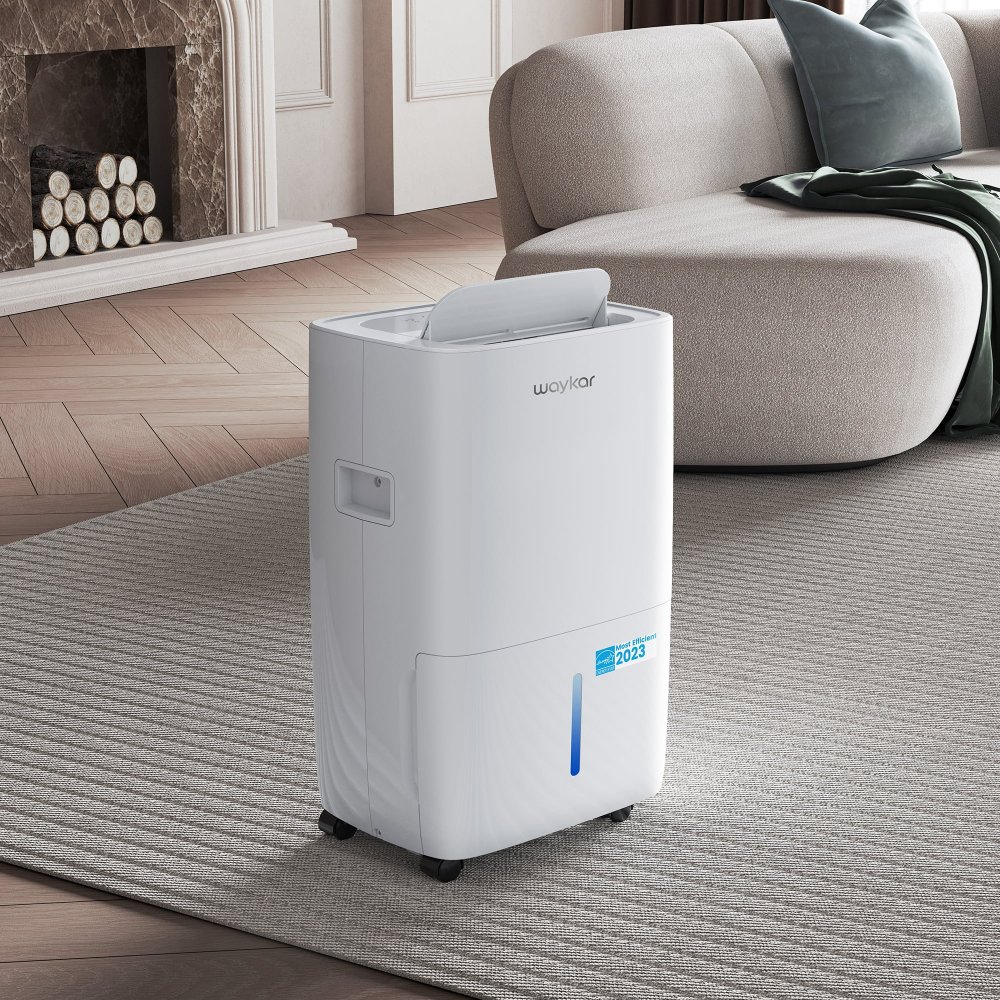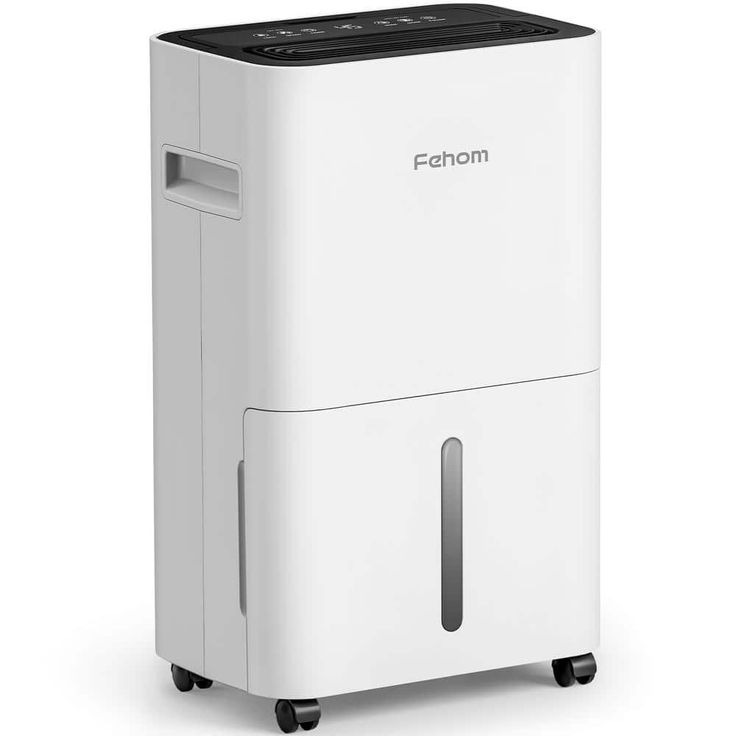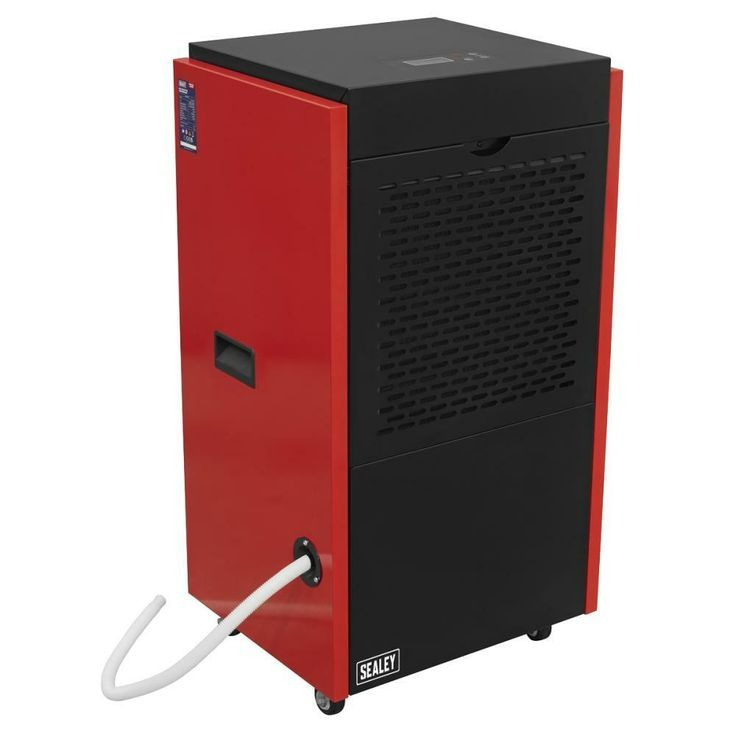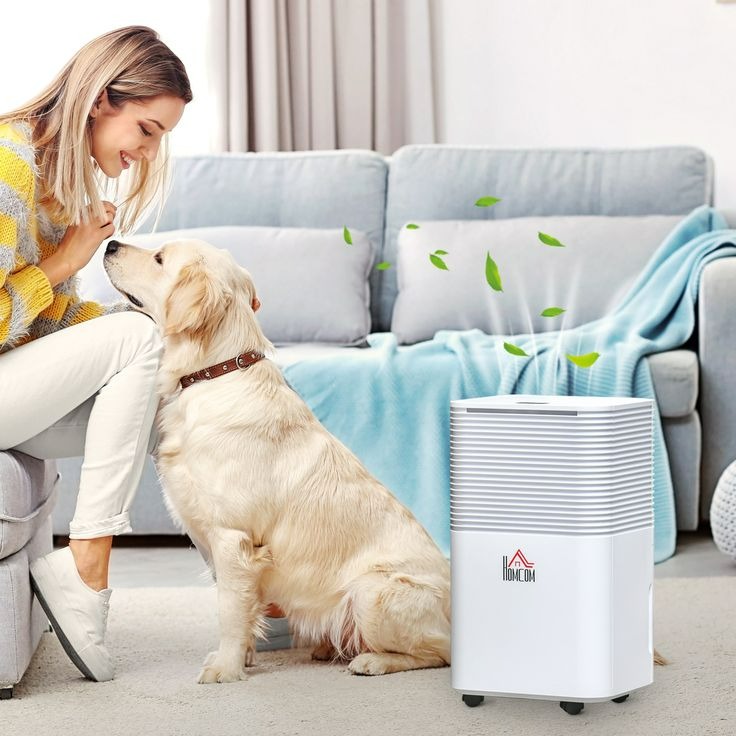Benefits of Using a Dehumidifier
What is a dehumidifier used for? Improving comfort in your home is a key benefit of using a dehumidifier. High humidity can make rooms feel stuffy and warmer than they are. A dehumidifier helps reduce moisture levels, making your living space cooler and more comfortable.
A dehumidifier also promotes a healthier living environment. Moist environments favor the growth of dust mites, mold, and mildew. These can trigger allergies and respiratory issues. By keeping humidity levels in check, a dehumidifier helps prevent these allergens from thriving.
Moreover, excess humidity can cause musty odors that are tough to eliminate. A dehumidifier can help get rid of these unpleasant smells by drying out the air. This makes for a fresher and more pleasant atmosphere inside your home.
Energy efficiency is another plus. When air is humid, air conditioning systems must work harder to cool your home. This can lead to higher energy bills. Using a dehumidifier supports your AC unit, allowing it to run more efficiently and potentially reducing energy costs.
Lastly, dehumidifiers can help preserve the integrity of your home’s structure. Over time, high humidity can warp wood, peel paint, and cause wallpaper to bubble. By maintaining optimal humidity levels, these issues can be prevented, keeping your home in good condition for longer.

How Dehumidifiers Work
Understanding how dehumidifiers work is key to appreciating their role in your home. These devices extract water from air to manage humidity levels. To achieve this, a dehumidifier pulls air over cold coils. As air cools, its ability to hold moisture decreases. This causes water to condense on the coils and drip into a collection tank.
Dehumidifiers use a fan to draw in humid air. Once the moist air contacts the refrigerated coils, the moisture turns into liquid. A dehumidifier’s compressor then warms the dried air. Following this, it expels the air back into the room. This cycle repeats, continually reducing indoor humidity levels.
Some models have a hygrometer to measure room humidity. Users can set their desired humidity level. The device then works to maintain it by switching on and off. A float sensor within the water tank signals when it’s full. The device automatically shuts off to prevent overflowing.
In terms of energy use, modern dehumidifiers are energy-efficient. They often include features like auto shut-off and energy-saving modes. This can help reduce the costs associated with running the device over long periods.
To ensure your device functions well, regular maintenance is essential. This includes cleaning or replacing filters and emptying the water tank frequently. By understanding how a dehumidifier works, you can optimize its use for improved air quality and comfort in your home.
Common Uses of Dehumidifiers in Homes
Dehumidifiers play several roles in home environments. There are many common uses for these devices in daily life.
- Controlling humidity: They ensure comfortable humidity levels. This is essential in living rooms, bedrooms, and other active living spaces.
- Protecting belongings: Many homeowners use dehumidifiers to safeguard items from dampness. These items include books, clothing, and furniture.
- Enhancing air quality: Dehumidifiers remove moisture. This helps to improve the air that your family breathes.
- Drying laundry: In humid climates, these devices assist in indoor drying of clothes. This avoids damp smells and speeds up the drying process.
- Kitchen and bath: High humidity often occurs here. Using a dehumidifier can help prevent moisture buildup in these areas.
- Basements and crawl spaces: These areas are prone to dampness. A dehumidifier can keep them dry and free from mold risks.
- Garages and workshops: Protect tools and equipment from rust and corrosion with drier air.
- Workout rooms: After exercise, these spaces can become humid. Dehumidifiers help maintain a healthier environment.
- Storage spaces: These devices can also be crucial for long-term storage areas to prevent mildew.
Remember to consider where to best place a dehumidifier. Ensure it maximizes its effectiveness. Each home is unique and may have specific needs for dehumidifier use.

Dehumidifiers in Combatting Allergies and Asthma
Dehumidifiers are often pivotal in reducing allergy symptoms and asthma attacks. These conditions worsen when indoor humidity levels are high. Dust mites and mold thrive in moist environments. They are common triggers for allergies and asthma. By using a dehumidifier, you lower the humidity, creating a less appealing environment for these allergens.
The device helps maintain a drier climate where dust mites cannot survive as well. This is crucial for people who are sensitive to these tiny pests. Similarly, mold spores need humidity to multiply. By keeping air dry, a dehumidifier helps prevent the spread of mold spores. This can reduce asthma flare-ups linked to mold exposure.
Breathing becomes easier as the air is less humid and cleaner, which is beneficial for asthma sufferers. This is important for creating a comfortable living space, especially in bedrooms where people spend a large portion of their time.
Moreover, reducing indoor moisture can also help reduce irritants that cause skin conditions. These irritants often accompany allergies and asthma, so dehumidifiers provide a multi-faceted defense.
Lastly, people living in humid regions may find dehumidifiers particularly beneficial. In these areas, indoor air can be significantly more humid year-round, making allergy and asthma management a constant struggle. A dehumidifier can be an effective part of an overall strategy to improve indoor air and health.
The Role of Dehumidifiers in Mold and Mildew Prevention
Mold and mildew need moisture to grow. Dehumidifiers help tackle this by reducing indoor moisture levels. Here’s how they contribute to mold and mildew prevention:
- Control humidity: A dehumidifier maintains lower humidity levels, making it harder for mold and mildew to develop.
- Prevent damp spots: Without excess moisture, walls and corners in your home stay dry. This averts the growth of mold and mildew.
- Protect health: By preventing mold and mildew, dehumidifiers safeguard against related health issues.
- Save on cleaning: With less mold and mildew, you’ll spend less time and money on cleaning and repairs.
- Preserve home integrity: A moisture-free environment helps to keep the structure of your home safe from damage.
By keeping your indoor air drier, you create an environment where mold and mildew struggle to survive. This is vital for the health of both your family and your house. Always ensure your dehumidifier is correctly sized for your space to maximize its effectiveness.

Using Dehumidifiers to Protect Furnishings and Electronics
Dehumidifiers serve a crucial role in preserving the life of your furnishings and electronics. High humidity can cause wooden furniture to warp and fabrics to become musty. By maintaining a lower humidity level, dehumidifiers help keep furnishings in top condition.
Electronics are also vulnerable to moisture. The damp conditions can lead to corrosion of metal parts and short circuiting. Using a dehumidifier keeps the environment dry, reducing the risk of electronic failure.
Here’s how dehumidifiers work to protect your home items:
- Prevent Wood Damage: High moisture can damage wooden structures and furnishings. Dehumidifiers keep wood from swelling and distorting.
- Avoid Fabric Deterioration: Fabrics are prone to mold and odor in damp conditions. By controlling moisture, dehumidifiers prevent these problems.
- Shield Electronics: They reduce the risk of moisture-related damage to TVs, computers, and other electronics.
- Enhance Longevity: Overall, by using a dehumidifier, you can extend the life and functionality of various household items.
In homes where valuable or sentimental items are kept, the use of a dehumidifier is especially beneficial. It is essential to monitor humidity levels and maintain them to ensure the protection of your belongings.
Dehumidifiers in Commercial and Industrial Settings
In commercial and industrial spaces, dehumidifiers are vital assets. They help manage air quality and protect materials and products. Here are key uses:
- Preserve Raw Materials: In industries like woodworking and pharmaceuticals, moisture can compromise raw materials. Dehumidifiers keep them dry and usable.
- Maintain Equipment Performance: Moisture can damage machinery. Dry air from dehumidifiers prevents rust and corrosion, ensuring reliable operation.
- Reduce Downtime: By preserving equipment, dehumidifiers decrease maintenance needs. This results in less downtime and higher productivity.
- Enhance Product Quality: In food production, excess humidity might lead to spoilage. Dehumidifiers safeguard against this, ensuring quality goods.
- Stabilize Environments: They help maintain consistent environments for material storage. This is crucial in industries like clothing or electronics.
- Improves Work Conditions: Dry air boosts comfort and health for employees. This can lead to better performance and less sick days.
- Supports Process Requirements: Some manufacturing processes demand strict humidity control. Dehumidifiers make this possible.
The needs in commercial and industrial settings can vary greatly. It is crucial to choose the right dehumidifier size and features. Companies should assess their specific humidity control needs. This ensures they benefit fully from what a dehumidifier can offer.
Importance of Dehumidifiers for Indoor Air Quality
Maintaining good indoor air quality is essential for health and comfort. Dehumidifiers are key tools in this effort. They reduce moisture levels in the air. This in turn helps to keep the indoor environment healthier.
- Minimize Contaminants: Lower humidity means fewer dust mites and mold. These are common indoor air pollutants.
- Reduce Odors: Damp air can cause musty smells. A dehumidifier helps remove this odor-causing moisture.
- Promote Comfort: Humid air feels muggy and sticky. Reducing moisture can make the air feel cooler and more comfortable.
- Enhance Respiratory Health: Dry air can ease breathing for those with asthma or allergies.
- Improve Sleep Quality: A comfortable environment promotes better sleep. This is especially true in bedrooms where the air quality matters most.
Remember to check the humidity with a hygrometer. Adjust your dehumidifier as needed to maintain the ideal level. For most comfort and health benefits, aim for a humidity level between 30% and 50%. Use dehumidifiers as part of a wider strategy for healthy indoor air. This includes ventilation, regular cleaning, and air purification. Together, these steps ensure the air in your home supports well-being.
